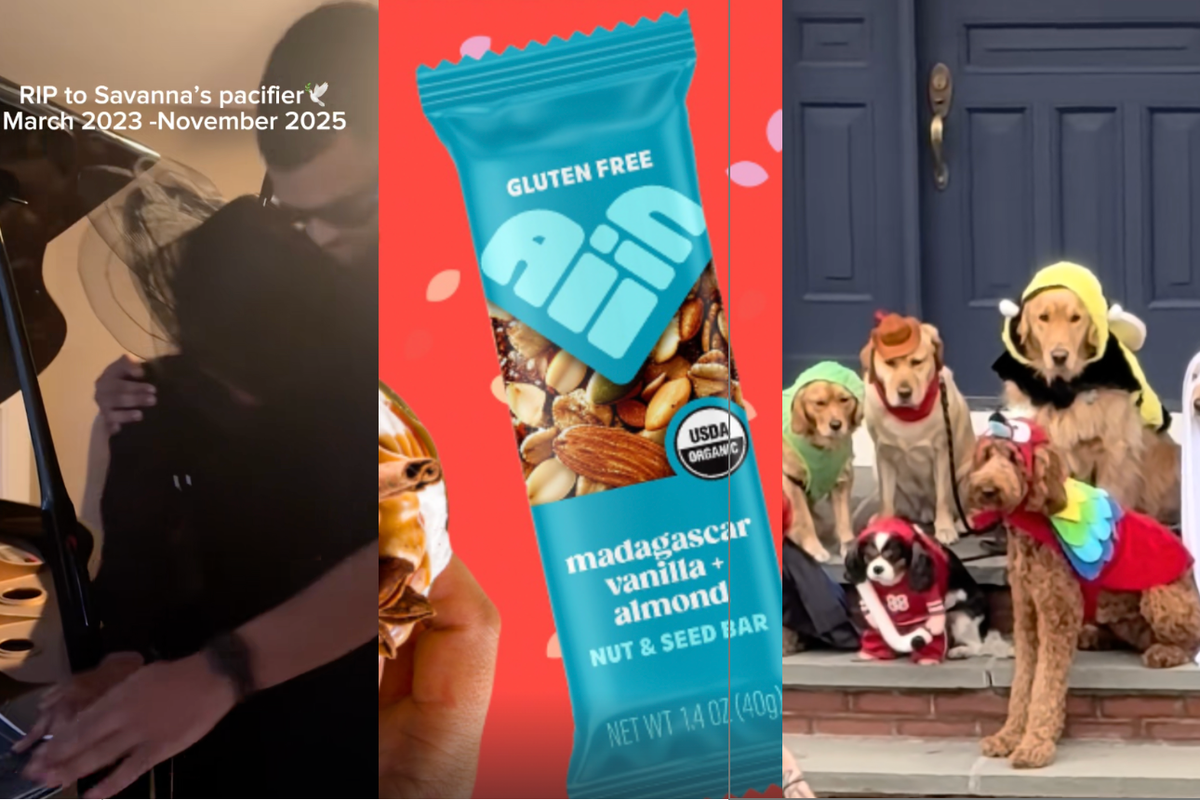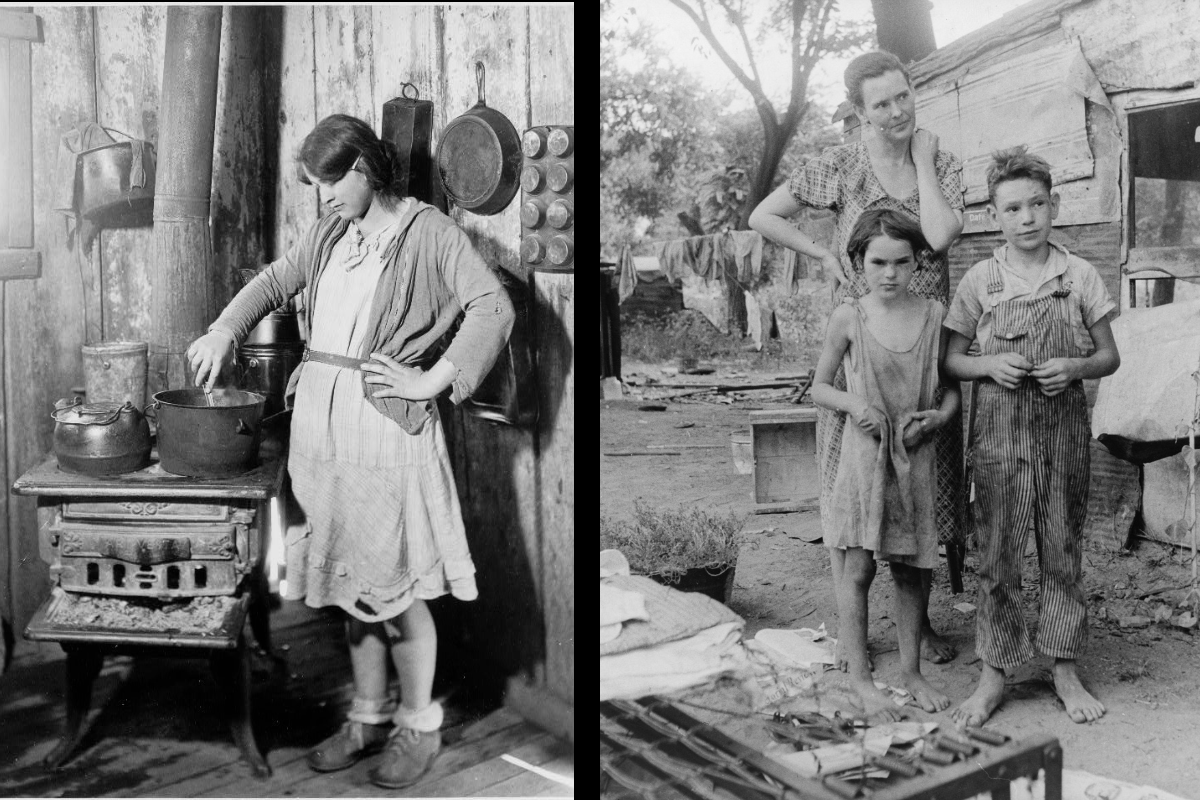A gynecologist tweeted about periods, and a great discussion about gender happened.
A trending hashtag started an important conversation about what words we use.
How would the world be different if men had periods?
It's certainly not a new question. More than 40 years ago, Gloria Steinem wrote "If Men Could Menstruate," a sharply satirical take on how society treats men versus women.
Photo by Alberto E. Rodriguez/Getty Images.
"So what would happen if suddenly, magically, men could menstruate and women could not?" wrote Steinem. "Clearly, menstruation would become an enviable, worthy, masculine event."
She goes on, joking that if men could have periods, they'd "brag about how long and how much," they'd view them as signs of strength and masculinity, and they'd fight to ensure "sanitary supplies would be federally funded and free." Reading that, one can't help but think about how different the world actually is.
Recently, the hashtag #IfMenHadPeriods trended on Twitter, revitalizing Steinem's decades-old criticism for the modern day.
In a string of tweets, Dr. Jen Gunter, OB-GYN and writer, began dishing out some real talk about periods that roughly 50% of the population can't fully appreciate. Within a few short hours, #IfMenHadPeriods started trending.
The tweet that sparked the trending hashtag spawned a conversation that both was and wasn't what Gunter intended.
"It was the end of a larger tweet stream about menstruation that started in response to mansplaining about periods and mood," Gunter wrote in an email. "Some guy tried to correct a woman by saying ovulation affects mood not menstruation. So I started tweeting about all the ways periods are inconvenient."
"Lots of people responded, many shared their own stories. I tweeted about accidentally inserting 2 tampons, ripping out pubic hair with pad adhesive, and the bloodbath of changing a tampon on a train for example. Many people seemed to like to hear that the same period issues they've had a GYNO has also experienced."
In starting the conversation, Gunter's goal was to vent and bond with others who have periods — gender aside. But somewhere along the line, #IfMenHadPeriods became the hashtag of choice for people responding to Gunter's tweets, presenting an unforeseen problem.
The hashtag, unfortunately, misses one very crucial point: Some men do have periods — transgender men.
Some trans men — that is, men who were assigned female at birth — jumped in on the hashtag to helpfully remind others that they exist. The responses to their tweets tended to range somewhere between "Trans men aren't really men" and "You are a woman," neither of which is particularly helpful.
Is this just another example of "hurt feelings" and "political correctness run amok?" Not exactly.
"The refusal to accept and recognize that there are men who menstruate and get pregnant and there are women who have penises and don't, contributes to the relentless assault on trans people in courts, legislatures and on the streets," ACLU staff attorney and trans man Chase Strangio wrote in a Twitter direct message, explaining that human bodies are more complicated than a reductive gender binary narrative suggests.
In regards to the trending hashtag, Strangio said, "there are better ways to call out sexism than erasing the bodies of people who are not cisgender."
This type of reductive language that labels people according to what body parts they were born with has real-life consequences.
For example, a Lambda Legal study of health care found that many trans men were denied reproductive health care simply for being trans.
“I called a gynecologist’s office trying to schedule a hysterectomy," reads a trans man's story in Lambda Legal's report. "I told the receptionist that I was a transgender male. Two days later, I received a phone call telling me that the doctor did not take cases like mine and referring me to a hospital. I remember feeling like a freak. I called the second number. The receptionist told me they didn’t deal with transgender men either."
Kelley Cantrell was one of the most vocal critics of the hashtag, and they've written about the real-life effect this type of messaging has on trans men and non-binary people in the past.
"For the trans men (and anyone else who identifies on the masculine spectrum) who go to OBGYNs or get yearly exams at their [primary care physician], it creates a really uncomfortable environment when their healthcare providers refer to them as women and use female pronouns," Cantrell wrote in an email. "Healthcare providers need to be more up to date on the queer community's healthcare issues so that they can foster inclusive, safe spaces in their hospitals and offices."
All of this is to say that, yes, it can be tough to find the balance between inclusive language and effective messaging. So what to do?
On one hand, the overwhelming majority of people who have periods are women, so it makes sense to refer to that as a "women's issue," right? On the other hand, it's not just a women's issue, as it ignores people who have periods but aren't women. Go too far in one direction, and people are being actively excluded; go too far in the other, and the core message gets completely diluted.
The balance between the two is something I've been wrestling with for years.
Sometimes, inclusive language comes off as a bit clunky, as evidenced by a recent Planned Parenthood tweet that used the term "menstruators" rather than "women." But maybe that's just because, in many ways, inclusive language is still a work in progress.
The response to Planned Parenthood's tweet was really heated, with some cisgender (non-trans) women arguing that not explicitly saying "women" was dehumanizing and a number of trans men, non-binary people assigned female at birth, and their allies praising the organization for making the good-faith effort to be inclusive.
Completely lost in the conversation prompted by the tweet was discussion of the actual topic at hand: the tampon tax. And maybe that's the fine line we need to keep an eye on.
There are real issues that need to be addressed in the world. So long as that's the case (as it will always be), the question of tact will come up.
In the case of the #IfMenHadPeriods tag, it seems like the discussion — which was about addressing institutional misogyny — veered off track. To get back, it's worth checking in again with Gunter.
Photo by Stefan Heunis/AFP/Getty Images.
"I hate that people feel menstruation is a taboo subject," wrote Gunter. Her tweet with the #IfMenHadPeriods hashtag was toward the end of her longer stream of tweets about one guy who tried to mansplain menstruation. "I'm actually quite sad it was the tweet that mentioned men that was the one that got picked up attention wise. The stream was about menstruation not men or gender."
"The point of my tweets [was] about the challenges of menstruation and patriarchy. It seems some of that was lost in translation."
Do some men have periods? Yes. Are most people who have periods women? Yes. Are trans men really men? Yes. Does society impose penalties such as taxes and employment discrimination on those who have periods? Yes.
As long as we can all acknowledge the above truths, we can have a good-faith conversation about what words we use to try to create change. Because here's the thing: All those people who were replying to trans men on that hashtag? The ones tweeting things like "You're not really a man"? They're not helping advance any cause.
Photo by Loic Venance/AFP/Getty Images.
For this type of nuanced conversation to be productive, it's important we agree on the question being debated. In this case: Does inclusive language come at a political or social cost to a movement's effectiveness, and if so, what do we do moving forward? One example might be the question of whether saying "women's rights are under attack" is more effective than saying "reproductive health care is under attack." The latter is certainly more accurate and more inclusive; but is it as politically effective?
That's the line we need to walk. Effectiveness doesn't need to come at the expense of accuracy or inclusion, but it often does. It's by sitting down with others committed to the same cause (but who might have differing tactical viewpoints) and having a conversation about these nuanced aspects of life that we can help create better, more effective, more inclusive political movements that work for everybody's interests.





 Team meeting chaos: one employee silently pleads for help.
Team meeting chaos: one employee silently pleads for help. Overcoming fears: Shadow looms large, but courage stands firm.
Overcoming fears: Shadow looms large, but courage stands firm. Confused expression against a bright yellow background.
Confused expression against a bright yellow background.
 Stayin Alive GIF by Bee Gees
Stayin Alive GIF by Bee Gees 
 BabyCenter's Top 10 baby names for 2025.Canva
BabyCenter's Top 10 baby names for 2025.Canva The name Luca has seen a rise in popularity.
The name Luca has seen a rise in popularity.  Susannah has climbed over 3,000 spots on the baby name chart.
Susannah has climbed over 3,000 spots on the baby name chart.  Pope Francis passed away in April 2025.
Pope Francis passed away in April 2025.  How do you choose a name for a brand new human?
How do you choose a name for a brand new human? 
 Never good when the HOA President comes knocking.
Never good when the HOA President comes knocking.  Kids should be able to play outside; but how strictly should we regulate them? Photo by
Kids should be able to play outside; but how strictly should we regulate them? Photo by